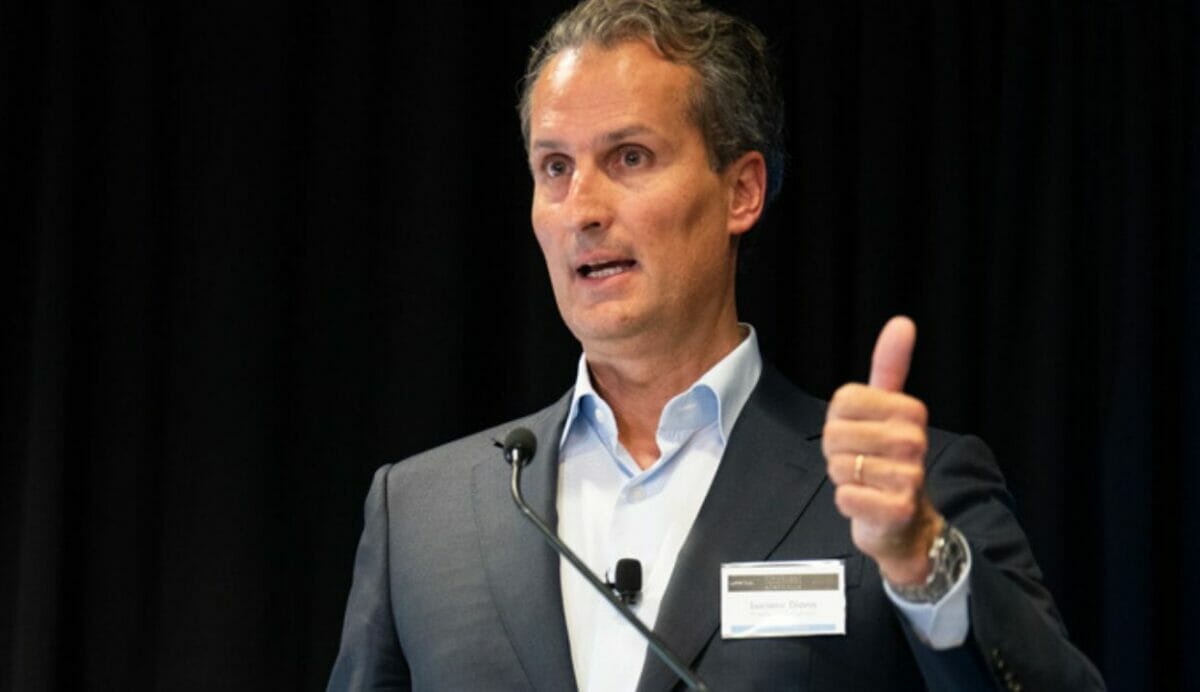A foundation stone of the transition to renewable energy is paradoxically a major contributor to the problem it’s helping to solve. How asset owners think about investing in a solution that is also part of the problem is a challenging and complex task.
Semiconductors are integral to the transition to renewable energy and the development of AI. But investors face a paradox when semiconductor production itself has such a large environmental footprint.
The energy transition and the growth of AI is inconceivable without semiconductors, Pictet Asset Management senior portfolio manager Luciano Diana told the Top1000funds.com Fiduciary Investors Symposium at Stanford University.
Diana said the question facing investors is whether semiconductors are a very simple enabler of the energy transition, or whether they a growing environmental problem, “and the answer is both, actually”.
“We do have a paradox, because they are crucial for the green transition,” he said.
“They enable electrification, decarbonisation and energy efficiency. At the same time, they have an environmental footprint which is growing very rapidly in-line with our data economy.”
That footprint includes the use of large quantities of water, and (perhaps ironically) energy consumption.
“Should an investor like me, a responsible investor, allocate capital to this important and growing industry? Should I avoid it altogether? It’s a very complex topic,” Diana said.
Diana said calculating the footprint of semiconductor manufacturing is complex and bedevilled by incomplete data and, in any case, only tells part of the total story. But the energy transition can’t happen without increased semiconductor production so Pictet applies two conceptual frameworks to its investment decisions. The first is the concept of planetary boundaries, originally developed by the Stockholm Resilience Centre.
“It comprises nine dimensions [including] climate change, biodiversity, freshwater, chemical pollution,” Diana said.
“These are all interconnected, it’s really crucial to understand this. And each dimension has a boundary that shouldn’t be crossed if we want to avoid nonlinear and irreversible change.”
(The Stockholm Resilience Centre reported earlier this month the six of the nine boundaries have already been crossed.)
The second conceptual framework is lifecycle analysis, which is an estimate of energy, water and raw material-related emissions that are associated with a product’s lifecycle. And the lifecycle analysis gives rise to the concept of a company’s “handprint”.
Diana said a company generates a handprint when it offers its customers a solution that has a lower footprint than business as usual. It is a positive environmental measure, and the bigger the better, and there’s theoretically no limit to a company’s handprint.
“This is the opposite concept to that of the footprint, where with the footprint we want to reduce it down to zero as much as possible,” he said.
“Here, we want to maximize it. And because it’s a difference between a baseline and a counterfactual scenario, measuring a handprint inherently is complex and cannot be done very precisely.”
This approach can, and does, give rise to scenarios whre an investor commits capital to a company it knows has a large and often growing environmental footprint, but for the sake of the role the company plays in reducing the footprints of others.
Diana says the aim is to identify and invest in companies that “only want to minimize their own footprint, but they also at the same time want to maximize their handprint on the rest of the economy”.
Semiconductors are a good example of this approach, and there are others. And while there’s been significant focus on the production of semiconductors, particularly as a result of heightened public interest in renewable energy and AI, Diana says it’s important to keep the environmental issues in perspective for two reasons.
“The first reason is that the emissions from semiconductor manufacturing alone are around 100 million tons of CO2 equivalent per year,” Diana said.
“That’s 0.2 per cent of the global total. But more importantly, this footprint of an industry doesn’t tell the whole story about the environmental impact that it has on the rest of the economy. It’s important and essential I should say to also look at the handprint.”



